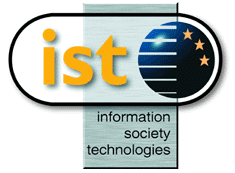 |
END OF PROJECT REPORT SaFES - IST - 1999 - 20842 Safe Food Enhancement System |
 |
|
3. PROJECT OBJECTIVES
|
|||||||
Furthermore, it was our intention to disseminate the results of the trial to as wide an audience as possible throughout the EU’s Member States and NAS in as smart and cost effective a manner as possible. The above objectives can be broken down into four basic tasks:
3.1 Implementation of the System The implementation of SaFES was broken down into a series of discrete tasks allowing a staged build up of the system. The system and sub-systems were assessed against their expected functions throughout the implementation. Reliability and integrity of data are vital aspects, and was established as part of this phase. The methodology underlying the implementation is outlined in the Methodologies section below. 3.2 Assessment against Relevant Standards To assess the performance of SaFES against expected standards, SaFES was evaluated against:
3.2.1 Accepted Industry Requirements of a HACCP Tool The trial found that the SaFES tool comprises the basic principles and follows the normal stages used when working out a HACCP plan. With the exception of verification procedures and flow-diagrams the SaFES system fulfils HACCP requirements. The output from the SaFES tool was evaluated by Scanfo Aps against EU and national directives and the HACCP Plan produced complies with the following legislation and standards:
3.2.2 Relevant Standards for e-commerce Tools The SaFES tool produced as part of the SaFES project is a prototype system. As such the trial system has been developed on a relatively small scale in that there are only two user sites. This inevitably means that the production system will have to be scaled with the back up of a commercially supported data warehouse. As the commercial data warehouse is the subject of on-going negotiation, the aspects of conformance with e-commerce standards in this area cannot as yet be established. It is a trial to prove the commercial concepts based on an existing off-line product. The trial, to fit in with this, used the same data structure as the off-line tool that was developed several years ago before many of the current standards were developed. 3.3 The Impact of SaFES on the Food Supply Chain The impact of SaFES on both the food supply chain and the various user functions explored in the trial are described in section 5.2 below. 3.4 Dissemination of Results The SaFES dissemination activities have been geared to spreading the message that: SaFES is an egalitarian catalyst for change, harnessing ubiquitous web technology to yield solutions that are affordable to SMEs (in the food industry) whilst changing business processes that have major implications for supply chain management and food safety. SaFES will help food operators comply in a cost-effective and controlled manner with the Legislation under preparation vis-à-vis "Regulation of the European Parliament and of the Council of the Hygiene of Foodstuffs" which should be directly applicable in all Member States from 1 January 2004. The main thrust of the dissemination has been to raise awareness and in due course to encourage:
Further details on the dissemination activities undertaken can be found in the Dissemination and Use Report, Deliverable D6. |
 |
|||
|
The
SaFES Project is partially financed by the EU's
|
|||
|
|
|||